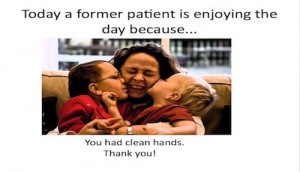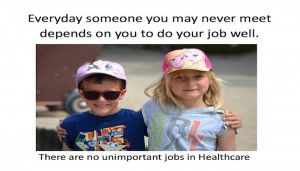One morning, an 84-year-old retired NYPD officer fell in his home. His wife called the Emergency Medical Service (EMS). However, rather than responding and transporting him to the Emergency Department at a local hospital, a Paramedic assessed him for trauma, evaluated his vital signs, and settled him comfortably into his bed at home. In consultation with an on-call Physician during the Paramedic visit, the patient avoided a trip to the hospital. Later that day, his personal Physician stops by the house to see how the he was doing and perhaps order home health care nursing or physical therapy visits. The patient was thrilled with the experience.
Community Paramedicine (CP) is part of a new and growing number of community response systems where emergency responders act as “physician-extenders” to provide in-home assessment and care for patients with minor injury, chronic illness, or debilitating conditions.
Community Paramedicine (CP) allows Paramedics to function outside their traditional emergency response and transport roles to help facilitate, as appropriate, other community healthcare resources and act as limited access to primary care for medically under served populations.
Within the CP Program, Licensed Paramedics and Emergency Medical Technicians (EMT) receive additional training to work as part of a community-based team of health and social services providers to connect resources. As a result, compared with traditional calls to EMS, only 22 percent of CP Program responses required transport to the hospital – meaning that 78 percent were evaluated and treated in the home. And that cost savings creates the opportunity to provide more services to patients in need.
This concept also has found application within rural communities as EMS staff extend emergency response to include other community health roles. This not only addresses gaps in primary care services, but also provides enough activity to allow the presence of EMS personnel for emergency response in very low volume areas. In such locations, Community Paramedicine Programs provide primary care in remote areas where access to physicians, clinics, and/or other providers or hospitals may be difficult.
Additionally, new programs have evolved in more urban areas that serve a similar role in the provision of community health/public health activities. In these areas, many CP Programs are designed to keep “frequent fliers” out of the emergency rooms by ensuring their health care needs are met in other ways – such as diabetic monitoring, obtaining mental health, medication management by a nurse, social services. CP Programs have the unique opportunity to be designed to meet the needs of that community through collaboration and integration with health care resources within that community. Additionally, in some areas, Paramedics may make scheduled visits to patients in their home to help prevent hospital readmissions of patients with chronic illness.
Emergency Departments (ED) across the country spend about $4.4 billion annually providing non-urgent care that could be best provided in a primary care setting such as a doctor office or clinic. The potential for cost savings and improved health outcomes, has policymakers, Emergency Medical Services (EMS), and health care providers across the nation testing strategies such as Community Paramedicine Programs to reduce the unnecessary use of Emergency Departments and provide timely and appropriate care to citizens.
Read more about it here:
Beyond 911: State and Community Strategies for Expanding the Primary Care Role of First Responders
Community Paramedicine
Community Paramedicine: Boon or Bane for EMS?Community Paramedicine: Boon or Bane for EMS?
Community Paramedicine Evaluation Tool
Community paramedics help medically complex homebound avoid hospitalization
EMS and Home Health: Partners in Improving Patient Outcomes and Lowering Costs
How 4 cities are making community paramedicine work for them
Introduction To Community Paramedicine
July 2013 Community Paramedicine: A Promising Model for Integrating Emergency and Primary Care



 One can hardly be faulted for being unable to describe something that by its very nature defines paradox. Healthcare is both universal and very personal; it is equal parts sincere compassion and callous power. Its reach encompasses the entirety of human experience; the spectrum of pain and pleasure, miracle and tragedy, altruism and greed.
One can hardly be faulted for being unable to describe something that by its very nature defines paradox. Healthcare is both universal and very personal; it is equal parts sincere compassion and callous power. Its reach encompasses the entirety of human experience; the spectrum of pain and pleasure, miracle and tragedy, altruism and greed.






 peptic ulcers and gastric reflux. Losec was widely used until several incidents occurred where it was confused with a very different drug – Lasix (a diuretic to reduce fluid in the body). The makers of Losec recognized this hazard and changed the name to Prilosec to reduce the potential for error.
peptic ulcers and gastric reflux. Losec was widely used until several incidents occurred where it was confused with a very different drug – Lasix (a diuretic to reduce fluid in the body). The makers of Losec recognized this hazard and changed the name to Prilosec to reduce the potential for error.
